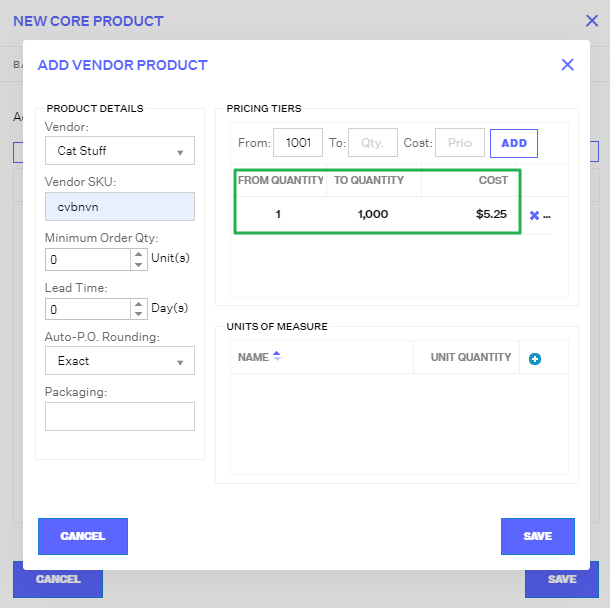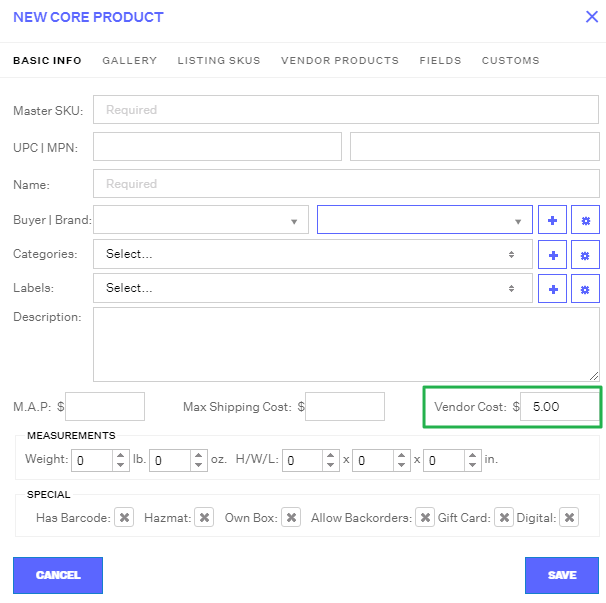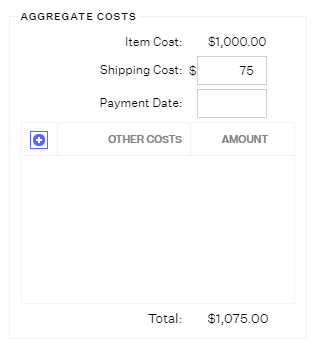Where does Extensiv Order Manager determine Inventory Value and COGS from?
2.1 min read
|The term "Inventory Value" refers to the dollar amount that each unit of a Master SKU is worth. Inventory Value is recorded as the Cost of Goods Sold (COGS) once the order has been shipped.
Inventory Value for each unit comes from one of two places:
- Actual IV Entries - These entries exist in the IV FIFO Queue. These are entries Order Manager has officially created from one of the following methods: Receiving units via Purchase Order or using the Reconciliation feature. You can find the history of these actual entries by clicking the Inventory Value History button under Stock Details on a warehouse basis.
- Default IV - The assigned value Order Manager gives to your units that have no Actual IV Entry (aka when there is a "Discrepancy"). Default IV is used for Analytics purposes and for the COGS amount recorded upon shipment.
- First In, First Out (FIFO) Landed Cost value for units received via a Purchase Order which creates Actual IV Entries.

NOTE
The Landed Cost used for Inventory Value will incorporate any Aggregate Costs for the PO divided amongst the Total Units Ordered. Aggregate Costs do not include the automatically shown "Item Cost" amount, only any additional costs added. So in the example below, the total "PO Aggregate Costs" would be $75. The Purchase Order amount is $1,075.00.
Additionally, this same amount will be used to calculate Default IV for any same-SKU units with a Discrepancy as long as there are any remaining units received from the PO unshipped in the IV FIFO Queue.NOTE
Aggregate Costs for a PO (found in the Details tab of a PO) are automatically factored into the final Inventory Value for stock when it is received via PO. The Aggregate Costs for a purchase order do NOT include Discounts. If you want the Inventory Value FIFO Queue to reflect any applicable discount, then that discount needs to be manually included in the final cost for each line item. That means you will need to physically edit the Landed Cost field for every line item that has a discount on a PO from its current value to one that incorporates the price of the line item with the Discount applied. If you do not physically edit the Landed Cost value for a line item, then it will simply be calculated using the default calculation.
Example: You received 10 units of a SKU via PO at an IV for $1 each even though the Default Vendor Product Cost is $2. You manually added 100 units of the same SKU directly via the Inventory Module and you didn't Reconcile them. You now have 10 units with an Actual IV entry of $1, and 100 units with a Default IV of $1 each, bringing your Total IV for that SKU to $110. As long as any of the 10 units received via PO are unshipped and you have un-reconciled units, your 100 units will be valued at $1. But as soon as the last of your 10 units received via PO are shipped, Default IV will start pulling from the Default Vendor Product Cost (covered below), so your 100 un-reconciled units would then be valued at $2 each, with a Total IV of $200.
- The Default Vendor Product's "Cost" can be found in the Vendor Product. Order Manager will use the top line quantity to calculate Inventory Value.

- If there is no cost associated with the Vendor Product, Order Manager looks for Vendor Cost in the product.

- If Order Manager cannot find any of the above for the product, IV and COGS will be shown as $0.
For instructions on how you can edit your IV queue, see this article on the Inventory Reconciliation feature.

